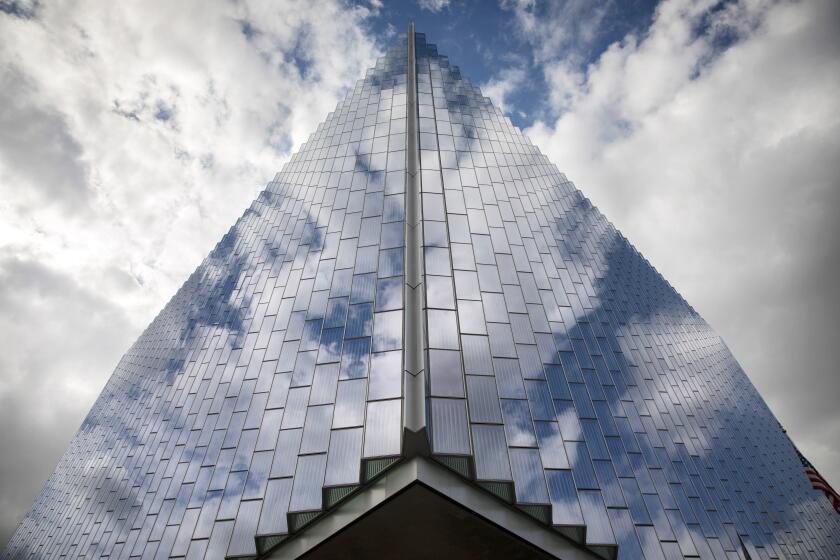Tree Habitat Resolves Sierra Club, Builder Rift
Klaus Radtke has provided a unique resolution to a nine-year dispute between the Sierra Club and developers of 154 acres in the Santa Monica Mountains by restoring a habitat for oak trees that pleases naturalists and builders alike.
Radtke, a wild-land resource scientist, Thursday showed homeowners and the media a 10-acre belt within the development where he recently planted 200 young California live oaks, several California black walnuts and a few Catalina cherries, sycamores and alders.
Los Angeles County’s handling of the mountainous swath of land, southeast of Mulholland Highway at the intersection of Mulholland Drive, became the subject of a Sierra Club lawsuit in 1978.
The lawsuit maintained that the county Board of Supervisors could not approve a major development at the time because it had not complied with state laws governing housing within its general plan.
Setting aside the tree-planting area was part of an out-of-court settlement of the suit. It marks the first time that the conservation group has been involved with a development company in land-use decisions, according to a Sierra Club representative.
Restore Oaks
The July, 1985, agreement between the Sierra Club and the Sunnyglen Construction Co. of Torrance called for Radtke, an environmental consultant, to restore a habitat for indigenous oaks, which were leveled during construction of a development of single-family homes.
“It’s an opportunity to head off what may have had disastrous environmental results,” said Jill Swift, local parks chairwoman of the Sierra Club’s Angeles chapter.
More than 1 million cubic yards of earth were moved before the development’s adobe and red-tile houses could be built, which dramatically changed the contours of the mountain site and left huge patches of bedrock exposed.
“Because this was a very tough site, we had to create entirely localized ecosystems so the oaks could survive,” Radtke said.
Sunnyglen sought a zone change from an agricultural designation, which allowed one house per acre, to a residential planned development designation that allowed a cluster of units.
In 1978, the Sierra Club drew attention to eight landslide areas on the site during a protest march and during hearings before the county Regional Planning Commission.
In 1979, Sunnyglen presented alternate plans that it said would lessen the risk of landslides and win approval from the county to build.
The Sierra Club won a temporary injunction against Sunnyglen in April, 1980, and it took another five years to hammer out the out-of-court settlement. During that time, Sunnyglen sold the site to Watt Pacific of Santa Monica.
Although the site has been sold, the points agreed to in the settlement are still valid, said Carlyle Hall, an attorney who represented the Sierra Club.
Among those points are a prohibition against developing the oak-restoration area and hiking trail and donation of $700,000 to be used for land acquisition in the Santa Monica Mountains.
Radtke said creation of the restoration project and preservation of the hiking trail has increased the value of Watt Pacific’s property.
The property value of each house in the development has jumped by about $100,000 in the past year, he said.
“Nine months ago, they sold the first unit for $299,000,” said Radtke. “I heard the most recent one went for $400,000.”
More to Read
Sign up for Essential California
The most important California stories and recommendations in your inbox every morning.
You may occasionally receive promotional content from the Los Angeles Times.










